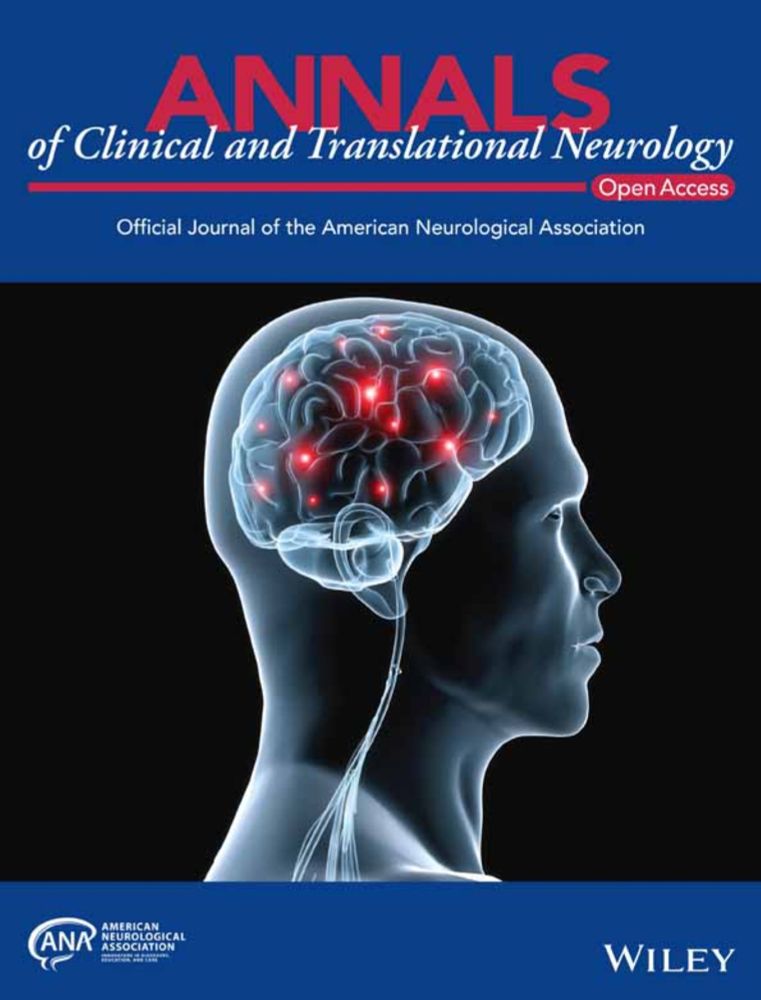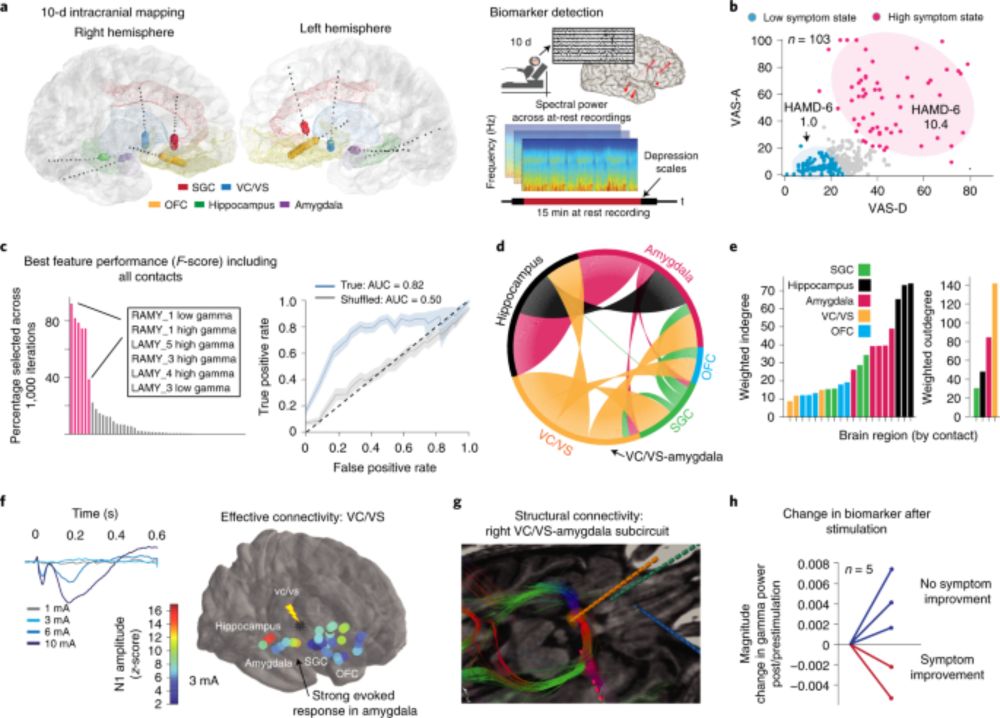
This one looks intriguing. Arousal "embedding" whole-brain dynamics. 🤯
#neuroskyence #compneurosky
doi.org/10.1038/s415...
@aniwodeyar.bsky.social
Statistics and signal processing for oscillations in the brain. Assistant Professor at Maastricht University, The Netherlands.

This one looks intriguing. Arousal "embedding" whole-brain dynamics. 🤯
#neuroskyence #compneurosky
doi.org/10.1038/s415...

VACANCY:
Assistant Professor in AI in Digital Agriculture and Sustainability.
lnkd.in/gFKhd32z
Professor Christopher Brewster and his team are looking for a highly qualified computer scientist with a broad passion for food and agriculture, environment, and biodiversity.
@cawbrewster.bsky.social

A man who had severe depression for more than 30 years has "experienced joy" after undergoing bespoke brain stimulation.
02.09.2025 01:27 — 👍 10 🔁 1 💬 1 📌 0
Brain–computer interface control with artificial intelligence copilots
#MLSky #CompNeuro #NeuroAI
www.nature.com/articles/s42...

A major way we avoid talking to another human being is by driving cars.
24.08.2025 05:28 — 👍 386 🔁 62 💬 13 📌 101. The philosophy of science sometimes gets an unearned reputation as a purely academic exercise that offers little by way of concrete tools for advancing research.
This is wrong.
And today, as we grapple with how AI is changing the nature of scientific activity, it's desperately wrong.
You know, thinking of Reviewer 2 as the bear is actually kind of helpful to me psychologically - I see the bear as just trying to make some friends... He _is_ walking away looking awfully lonely at the end.
31.07.2025 08:45 — 👍 1 🔁 0 💬 0 📌 0At what point do you run home and get under the blanket?
31.07.2025 08:37 — 👍 0 🔁 0 💬 1 📌 0
My favorite kind of science: www.science.org/content/arti...
I feel I've observed this (dragonflies dipping into water then doing loop-de-loops) in the wild but never fully reflected on the why. The science involved and the experiments required to expose it are delicious to understand :)

on the same notion but here we see an expansion of that idea.
In the linked post, researchers saw that using tDCS set up perhaps a favorable brain state for a drug effect.
onlinelibrary.wiley.com/doi/10.1002/...
Work from @andreashorn.org and colleagues.
I hope (and suspect) that we will see more of this style of reasoning into the future in several areas. Essentially, you can more effectively enable brain state changes _from_ specific brain states. The idea has existed in other forms elsewhere - tracking phase of oscillations is a variation ...
07.07.2025 10:18 — 👍 0 🔁 0 💬 1 📌 0Here's a bit of spice. Brain research clearly needs to tackle more complexity (than, say, Step 1: simple linear causal chains). But that leaves an ~infinite set of alternatives. Here, @pessoabrain.bsky.social advocates not for just a step 2, but a 3. /1
arxiv.org/abs/2411.03621

Was just thinking about this paper the other day and how much I enjoyed the way they set up the study. They figured out what brain dynamics were most linked to depressive symptoms, what it took to change that state and used that to implement a closed-loop system. Would love to be pointed to more...
03.07.2025 10:15 — 👍 1 🔁 0 💬 0 📌 0That said, developing tools to understanding what is a state (perhaps this is equivalent to an attractor), what are the possible states, tracking states in real-time and assessing what it takes to move from one state to another, is a direction I'm truly excited to engage with.
03.07.2025 10:15 — 👍 1 🔁 0 💬 1 📌 0
My suspicion is that degeneracy (the states possible under one set of parameters vs another can be the same) makes this kind of inference (i.e. assessing whether the system changed or it just received sufficient input to reach a new state) difficult. A classic: www.nature.com/articles/nn1...
03.07.2025 10:15 — 👍 2 🔁 0 💬 1 📌 0Awesome!
01.05.2025 07:53 — 👍 2 🔁 0 💬 0 📌 0
French scientist denied US entry after phone messages critical of Trump found
20.03.2025 12:42 — 👍 298 🔁 137 💬 45 📌 31I’d 💯 recommend being a TA for @neuromatch.bsky.social
The best way to learn is teach.
And the best way to teach is with phenomenal materials that are well structured and have solutions.

See the figure attached below.
The green line and shading represents thalamic spindle coupling in the absence of a coupled thalamic spikes while the orange/red line and shading represents the thalamic spindle coupling in the presence of epileptic spikes.
This observation of reduced slow oscillation-spindle coupling may be explained by the mechanism that we proposed in a paper last year that when slow oscillations are coupled with epileptic spikes that reach the thalamus, spindle occurrence is reduced (see Figure 2D): academic.oup.com/brain/articl...
18.03.2025 10:40 — 👍 1 🔁 0 💬 1 📌 0
Quite enjoyed passing through this new review: www.nature.com/articles/s41... on the interaction between epilepsy and sleep.
Earlier work from @laurentsheybani.bsky.social et al. on local wake slow oscillations were cool observations that I could finally go through: www.nature.com/articles/s41...
Honestly any odds ratio should come with an expected frequency icon array. Just so much more interpretable.
05.03.2025 22:12 — 👍 0 🔁 0 💬 0 📌 0All odds ratios on this scale should ideally come with an icon array of expected frequencies under exposure vs without.
05.03.2025 22:11 — 👍 0 🔁 1 💬 1 📌 0Oof this style of reporting is exhausting. Read thread!
05.03.2025 20:11 — 👍 2 🔁 0 💬 0 📌 0
Out today: cross-species improvement of cognitive flexibility
www.science.org/doi/10.1126/...
The TLDR: remember when we improved human cognition with deep brain stimulation? (pubmed.ncbi.nlm.nih.gov/34725508/)
Well, now we did it in rats, and it works the same!
Specifically... 1/

The observation from Hu et. al. that sleep spindles seem negatively linked to discharges in Lennox-Gastaut (onlinelibrary.wiley.com/doi/10.1111/...) fits with our past work on epilepsy patients where epileptic spikes were disrupting sleep spindles (dx.doi.org/10.1093/brai...).
11.02.2025 15:07 — 👍 0 🔁 0 💬 0 📌 0
Starting to wonder if the gains of auditory stimulation at night are reserved for folks who already have impairment of some kind. Everything I've seen so far would fit that expectation. www.medrxiv.org/content/10.1...
11.02.2025 14:52 — 👍 0 🔁 0 💬 0 📌 0Thanks!
11.02.2025 14:22 — 👍 0 🔁 0 💬 0 📌 0I'm curious what other examples demonstrate the idea that "control is as important as constraints" - I've heard of Ashby in these contexts but wondering what's a good ref to go to for a field agnostic take on this.
11.02.2025 14:14 — 👍 0 🔁 0 💬 1 📌 0
The story of auditory stimulation to induce seeming slow oscillations in sleep gets ever more complicated: www.biorxiv.org/content/10.1...
09.02.2025 19:03 — 👍 1 🔁 0 💬 0 📌 0